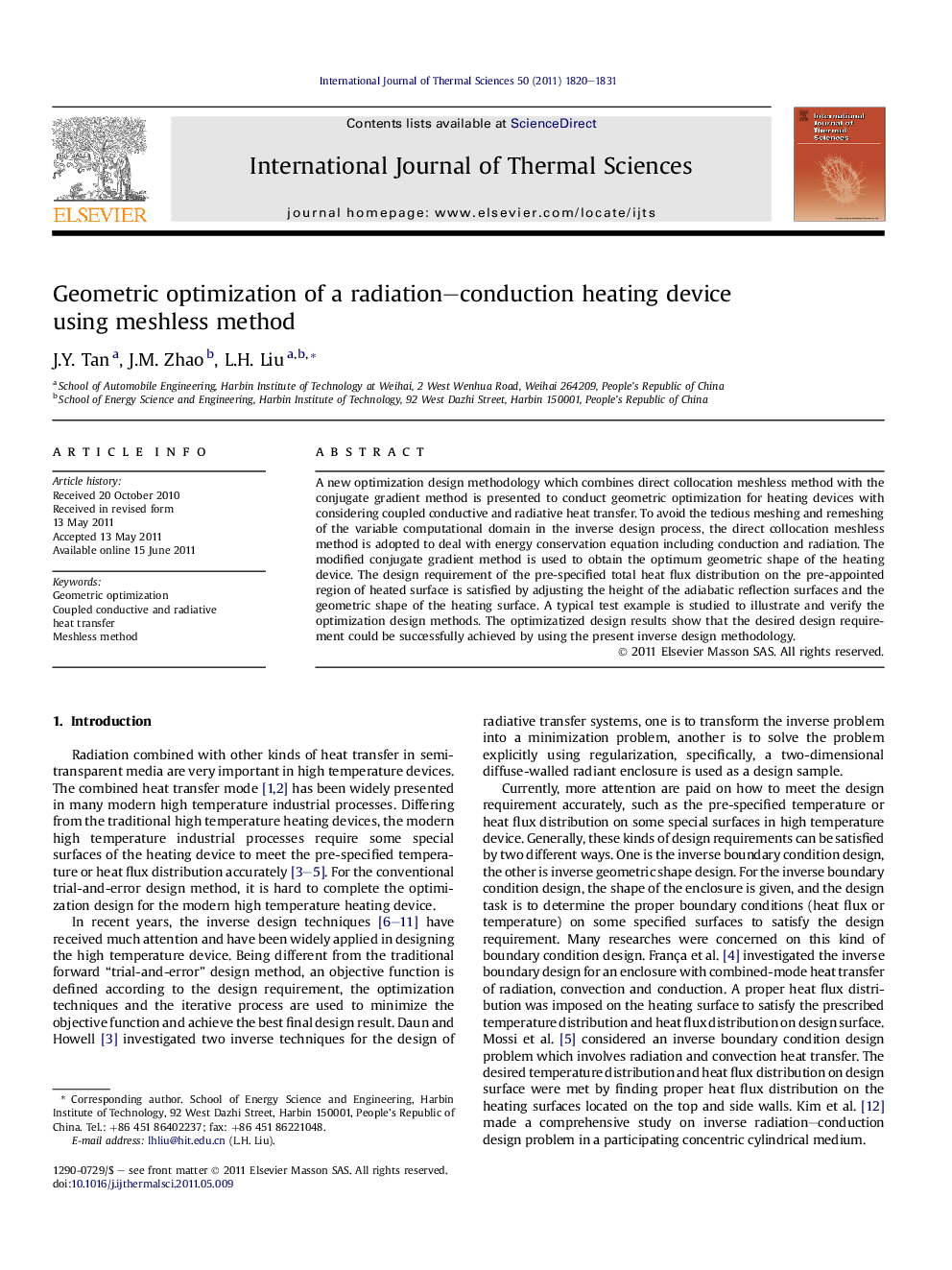| Article ID | Journal | Published Year | Pages | File Type |
|---|---|---|---|---|
| 669154 | International Journal of Thermal Sciences | 2011 | 12 Pages |
A new optimization design methodology which combines direct collocation meshless method with the conjugate gradient method is presented to conduct geometric optimization for heating devices with considering coupled conductive and radiative heat transfer. To avoid the tedious meshing and remeshing of the variable computational domain in the inverse design process, the direct collocation meshless method is adopted to deal with energy conservation equation including conduction and radiation. The modified conjugate gradient method is used to obtain the optimum geometric shape of the heating device. The design requirement of the pre-specified total heat flux distribution on the pre-appointed region of heated surface is satisfied by adjusting the height of the adiabatic reflection surfaces and the geometric shape of the heating surface. A typical test example is studied to illustrate and verify the optimization design methods. The optimizatized design results show that the desired design requirement could be successfully achieved by using the present inverse design methodology.
